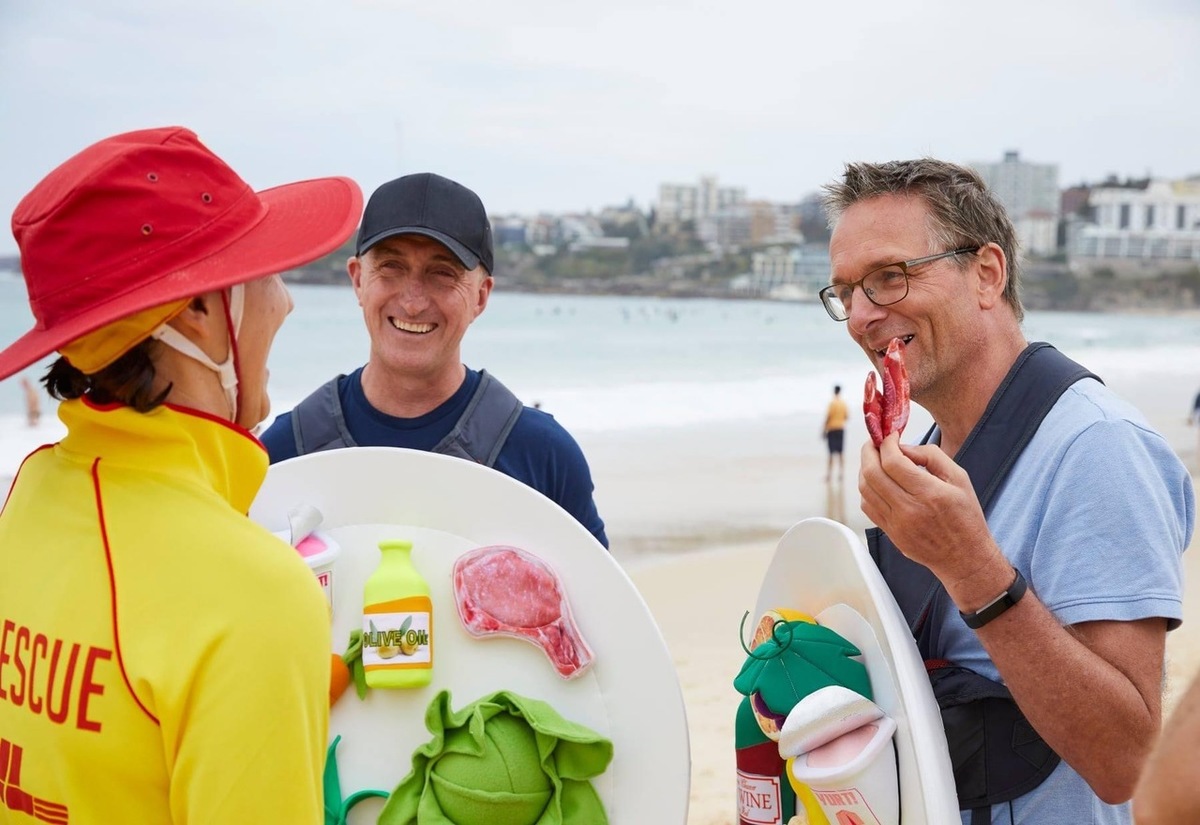Hope for diabetes patients in time for World Diabetes Day
Laura Williams
13 November 2021, 6:20 AM
 Ray Kelly and Dr Michael Mosley on their SBS program 'Australian Health Revolution'. (Supplied)
Ray Kelly and Dr Michael Mosley on their SBS program 'Australian Health Revolution'. (Supplied)This Sunday November 14 marks World Diabetes Day, created in 1991 in response to growing concerns about the escalating health threat posed by diabetes.
A complex condition, diabetes can be split into two types. While Type 1 diabetes is a condition where people don’t produce insulin, whereas type 2 is developed in people whose insulin levels can’t compensate for their high blood sugar levels.
Exercise physiologist Ray Kelly has become an expert on Type 2 diabetes since stumbling upon a study conducted on Indigenous populations in the early 2000s.
Nurturing those with the condition back into remission through his program ‘Too Deadly for Diabetes’, he has helped hundreds of Western Plains locals decrease their blood sugar and reduce their need for insulin.
“When we started in Bourke, I think we had 24 people sign up. Out of those, there were only a few who had blood sugars under 15. What you really need is blood sugars under seven,” Mr Kelly said.
For Indigenous Australians, where Mr Kelly’s attention has been focused over the last few years, Type 2 diabetes is more than four times likely to occur than for non-Indigenous Australians.
The cause, according to Mr Kelly, is solely genetic.
“It’s quite simply that Aboriginal people carry body fat around the organs at a lower BMI (body mass index),” Mr Kelly said.
He describes a scenario where two people weighing 80 kilograms, one Aboriginal and one European, would see different risks from putting on weight. While Europeans will carry that fat under the skin, Aboriginals will carry it around the heart, pancreas, and liver.
Added to the risk, rural and regional communities are even more susceptible to the condition, a product of limited access to fresh foods and access to health care.
According to health data, over 10 per cent of people aged 16 and over had diabetes or high blood sugar in 2019. In Far West NSW, the rate almost doubled to 20 per cent.
At the current rate, 1.3 billion people around the world are projected to have diabetes by 2045. One in two of those won’t even be aware they have the condition.
Mr Kelly has spent his career championing the remission of type 2 diabetes, a concept that has been controversial in medical circles. Since starting Too Deadly for Diabetes, however, he has led his clients to into remission from the condition.
“I couldn’t even guess how many, everyone who has done the program has lowered their insulin intake by at least 50-80 per cent, if not completely,” said Mr Kelly.
Program participant Margo described feeling depressed from the medical requirements of her condition having been diagnosed 30 years before.
“I’m over giving needles every day, every night,” she said.
It was in the program that she found her hope restored, able to overcome the need for insulin seven weeks in.
Many of the success stories hail from programs implemented in Bourke, Walgett, Brewarrina, and Coonamble.
In a program he presented on SBS ‘Australian Health Revolution’, Mr Kelly and co-host Dr Michael Mosley implement the program to reverse the effects of diabetes on eight Australians.
The programs including a diet change to fresh, unprocessed foods and walking as exercise.
As the show aired, Diabetes Australia released a statement announcing that Type 2 diabetes patients can be put into remission, backflipping on their previously hard stance against remission.
Before that, Mr Kelly’s approach had been widely criticised.
“Man, did I get some health professionals in my way. They’d say, ‘you can’t do that, it’s dangerous, it’s reckless.’. But it was all research-based, and it’s been done by different people around the world,” he said.
“It’s a big paradigm shift, from teaching people how to live with the disease, to saying that if you can lose a bit of weight, you may be able to knock (the diabetes) on the head,” Mr Kelly said.
It a timely glimmer of hope on World Diabetes Day for those who feel trapped by the condition.
“Life on insulin is restrictive, it affects you every day. It’s never too late to get in and take control.”
For those suffering from Type 1 diabetes, the solutions aren’t so clear. World Diabetes Day aims to ensure that regardless of type, people with diabetes have access to all the care they need.